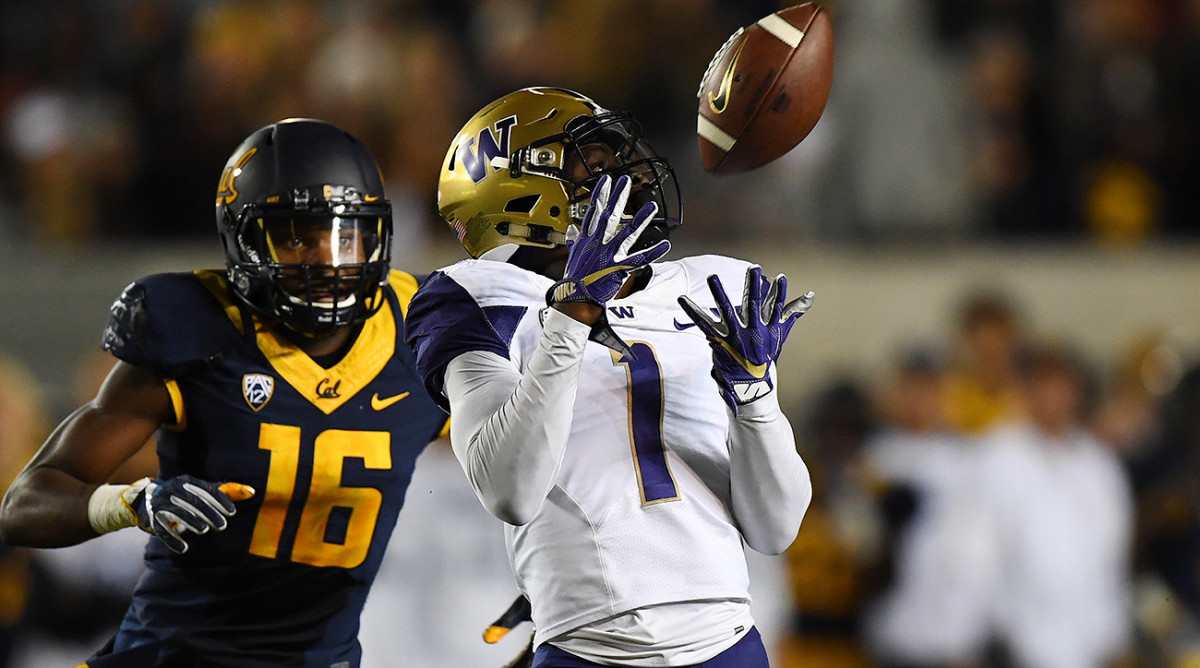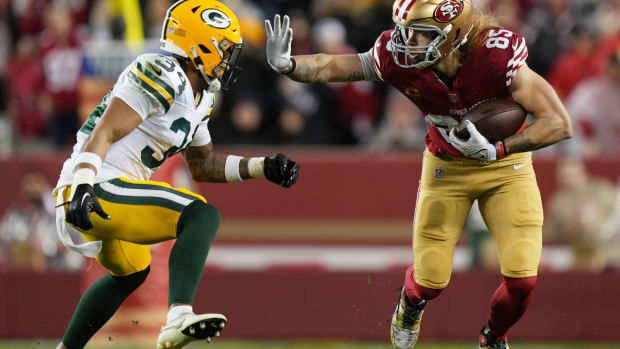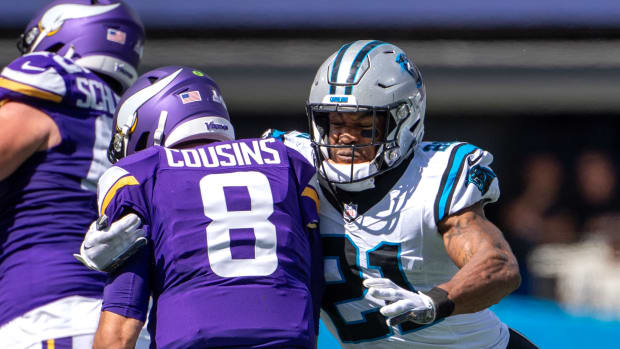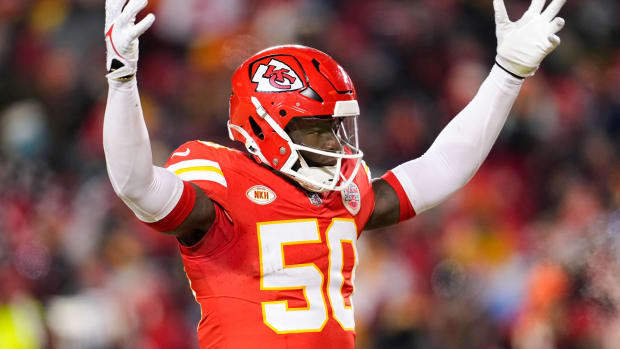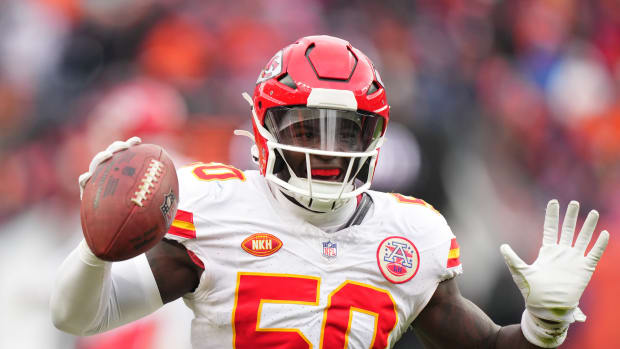2017 NFL draft prospect countdown, No. 15: John Ross, WR, Washington
What you need to know: Ross scored 19 touchdowns last season—one rushing, one on a punt return and 17 receiving, a number which topped the Pac-12 and placed Ross behind only Carlos Henderson and Corey Davis (both 19 receiving TDs each) for the FBS lead. Ross scored on better than 20% of his receptions (81 in total). He also racked up 1,150 yards receiving, the fourth highest single-season total in Washington’s program history. His work earned Ross second-team All-America and first-team All-Pac-12 honors. All this after he missed the entire 2015 season with an ACL tear, an injury that came on the heels of a torn meniscus during the 2014 season and subsequent microfracture surgery. Ross averaged 15.2 yards per catch and 24.1 yards per kick return for his Washington career.
John Ross Speeds Toward the Draft
Strengths: The 4.22-second 40-yard dash Ross ran at the combine was eye-popping, but the really exciting element of it for NFL teams is that the blazing speed shows up on tape. It wasn’t just an impressive 40 with nothing to back it up. Ross plays at ... well, maybe not 4.22 speed all the time, but certainly like he has a consistent 4.3 in the bag.
He also can feature that speed all over the field. He’s not just a straight-line deep threat.
“I didn’t just want to be just a speed guy,” Ross said. “I wanted to use my speed to help me get better in different ways. So that is what I did. Focus less [on being] a speed guy, and run just intermediate routes and just play better than what people thought I would.”
The spot where Ross (5' 11", 188 pounds) is better than his physical profile may suggest is in the red zone. Among his 17 touchdowns were a healthy dose of home-run plays, but Ross also is an effective weapon closer to the goal line. That’s a nod to his quickness as a route runner, as well as his ability to find and adjust to the football. Washington did not have to replace him with a larger receiver inside the 20.
Granted, it’s still the speed—and the big-play possibilities that come with it—which makes Ross such a coveted prospect. The Huskies fed him the ball in space, and he made defenders miss after the catch. He also can plant and go, meaning he can turn simple underneath crossing routes into explosive gains.
Ross shows signs of developing into a polished route runner, too. He already has enough nuance in his repertoire to move defenders off his path with a quick false step here or there—a jab inside for an outside-shoulder throw, for example. In time, he could become an even more complete playmaker than he is now.
His return abilities will get him on the field early, on top of his role on offense.
Weaknesses: While the knee injuries have yet to rob Ross of his speed, they are worrisome—the initial torn meniscus and microfracture surgery on the right side, the torn ACL on the left. Add in the post-combine shoulder surgery, and there is a lot of health baggage coming with an undersized receiver.
Because Washington helped create so much space for Ross, he will have to prove he can work through press coverage when he sees it. (Ross did say at the combine that he practiced often against CB Sidney Jones, a tall, physical defender.) How physical Ross can play may be more of an issue on catches in tight quarters than on his releases off the line. He’s probably not going to be lined up as an “X” receiver vs. a press-man cornerback all that often, if at all.
Oh, and the hand size: Ross’s measured at 8 3/4 inches, tying UConn’s Noel Thomas for the smallest among receivers at the combine.
NFL player comparison: T.Y. Hilton
































